The butterfly redemption: Inside the quest to save a struggling species
This article was originally featured on Hakai Magazine, an online publication about science and society in coastal ecosystems. Read more stories like this at hakaimagazine.com.
They are ravenous and roving. Newly emerged from a six-month state of suspended animation, over a dozen larvae scale the crumpled paper towel inside a plastic cup. One determined individual undulates past the others to the top of the paper peak. There, it anchors its hind prolegs, raises its head and abdomen, and begins a kind of dance. About the length of a paper clip, the caterpillar sways its black and bristly body back and forth. It reaches toward the light streaming in through the greenhouse glass and the face of the woman beaming down.
“It brings out the little-kid excitement in me,” says butterfly technician Heather, “something I haven’t felt in a long time. They want to see what’s going on. It’s like a little snake-charmer thing.”
Heather wears her dark hair in braids. She’s also wearing a bright red sweater marked DOC for Department of Corrections, identifying her as an inmate of Mission Creek Corrections Center for Women, a minimum security prison located near Belfair, Washington. Heather is not her real name. She says she feels lucky to be participating in this work while she serves her sentence here. She shows me around with a proud, almost parental smile. Along with eight other incarcerated women, Heather is entrusted with the care and feeding of nearly 4,000 members of an endangered species, the Taylor’s checkerspot butterfly. With this trust comes the privilege of working just beyond the razor-wire fence during the day before returning to life among the general prison population each night.
Taylor’s checkerspot butterflies are picky about where they live, requiring bright, moist, open wildflower meadows near the shade of a forest. Although never a wide-ranging species, they were once common from Oregon’s southern Willamette Valley to British Columbia’s Vancouver Island. Now, only 13 wild populations are known to exist in the United States; three more are known in Canada. A subspecies of the more common and widespread Edith’s checkerspot butterfly, the Taylor’s checkerspot is considered a keystone species of the Pacific Northwest’s remaining open prairie-oak ecosystems—97 percent of which have been lost to development, agriculture, and encroaching forests.
Recognizing the need for urgent action, the Oregon Zoo began a captive breeding program for the species in 2003. In 2011, the zoo helped establish the breeding program at Mission Creek as part of The Evergreen State College and Washington State’s Sustainability in Prisons Project. Since then, the work undertaken by these incarcerated women has become one of the last best hopes for the species’ survival.
On this mid-March morning, the air inside the program’s two greenhouses is warm compared with the shade of the surrounding forest and the adjacent prison yard. Metal racks containing hundreds of identical plastic cups house hungry caterpillars waiting to be fed the leafy green plantain the women grow in a garden outside.
After spending six months in a hibernation-like state known as diapause, the caterpillars roused in late January and have been busy bulking up ever since. After they’re released, they will continue to eat and grow through mid-March to mid-April, after which they’ll pupate beneath dry wood and vegetation and undergo metamorphosis. Their chrysalises, with cream-and-gray bands alternating with orange and black dots, offer a pastel preview of the butterfly to come. Only a few chrysalises have been found in the wild. In April or May, they emerge as adults and take to the air on wings of vivid red or orange and white, outlined in black, calling to mind the brightly hued geometry of stained-glass windows. Their life as butterflies is fleeting—just one to 14 days—but they use that time to mate and lay clusters of approximately 100 bright yellow, quinoa-sized eggs that take on a maroon hue before hatching. A single butterfly can lay up to 1,000 eggs. From those eggs, new caterpillars will appear, fatten up, enter diapause in June or July, and then awaken in January or February to, hopefully, continue the cycle in the wild.
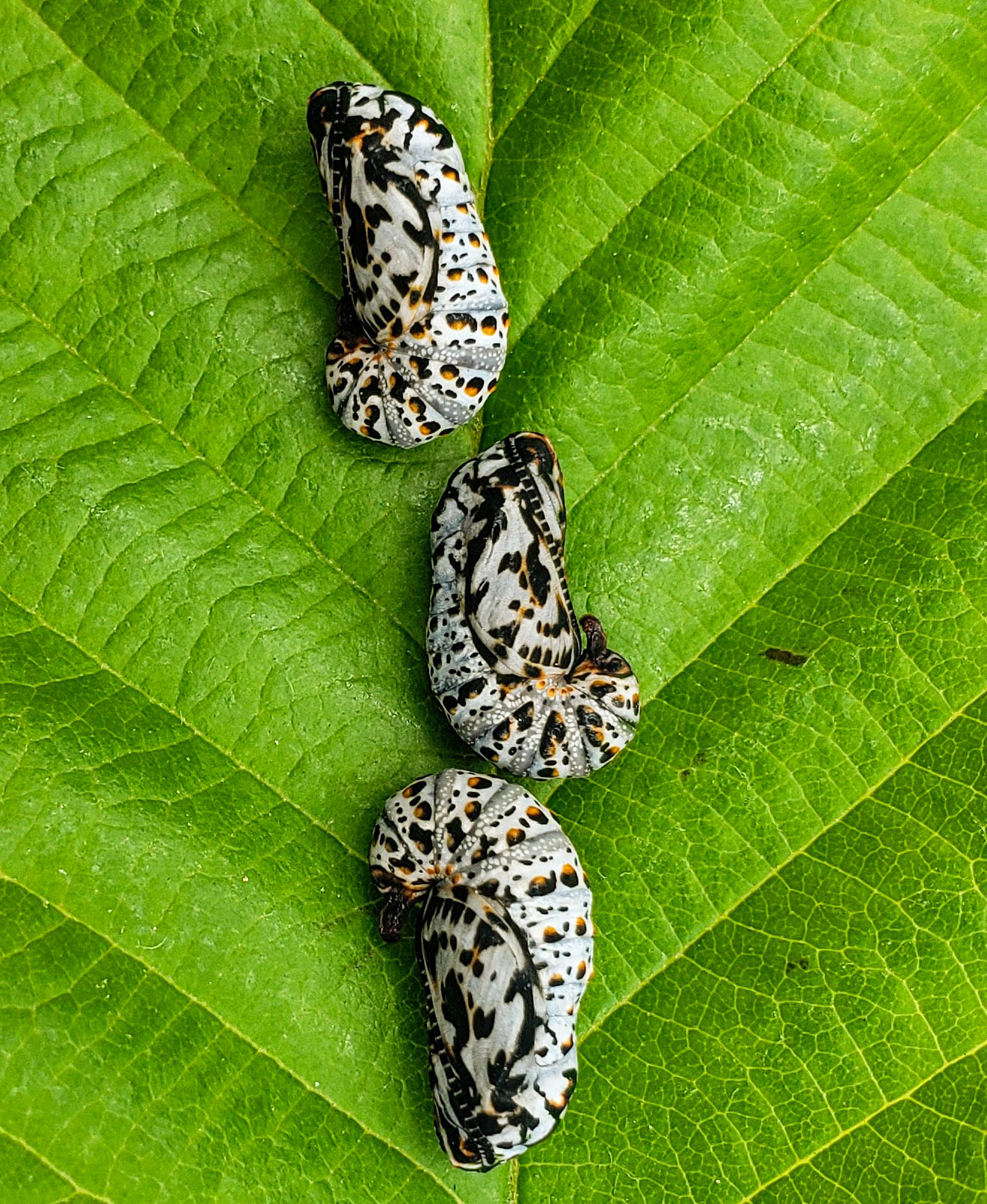
Here at Mission Creek Corrections Center, the butterfly techs keep a small number of caterpillars to complete their life cycle as captive breeding stock. Metamorphosis—as both biological process and metaphor—is a concept not lost on these women. It’s an endeavor in which they feel intimately involved.
Working alongside Heather is a fellow butterfly tech we’ll call Brooke. She’s dressed in a matching red DOC sweater, khaki pants, and rubber boots, but wears her long hair down. She, too, feels fortunate to be working just beyond the prison’s fence, where she regularly hears birdsong and the gurgling croak of ravens. The work includes monitoring greenhouse temperatures and humidity, growing and picking food for the caterpillars each day, and early in the year, watching for when the caterpillars awake from diapause. To ensure diverse and resilient populations, the women carefully document genetic lineages and track data to avoid breeding siblings. They also give them names. This year’s crop of males includes a lot of Georges—George Michael, George Foreman, and Boy George among them.
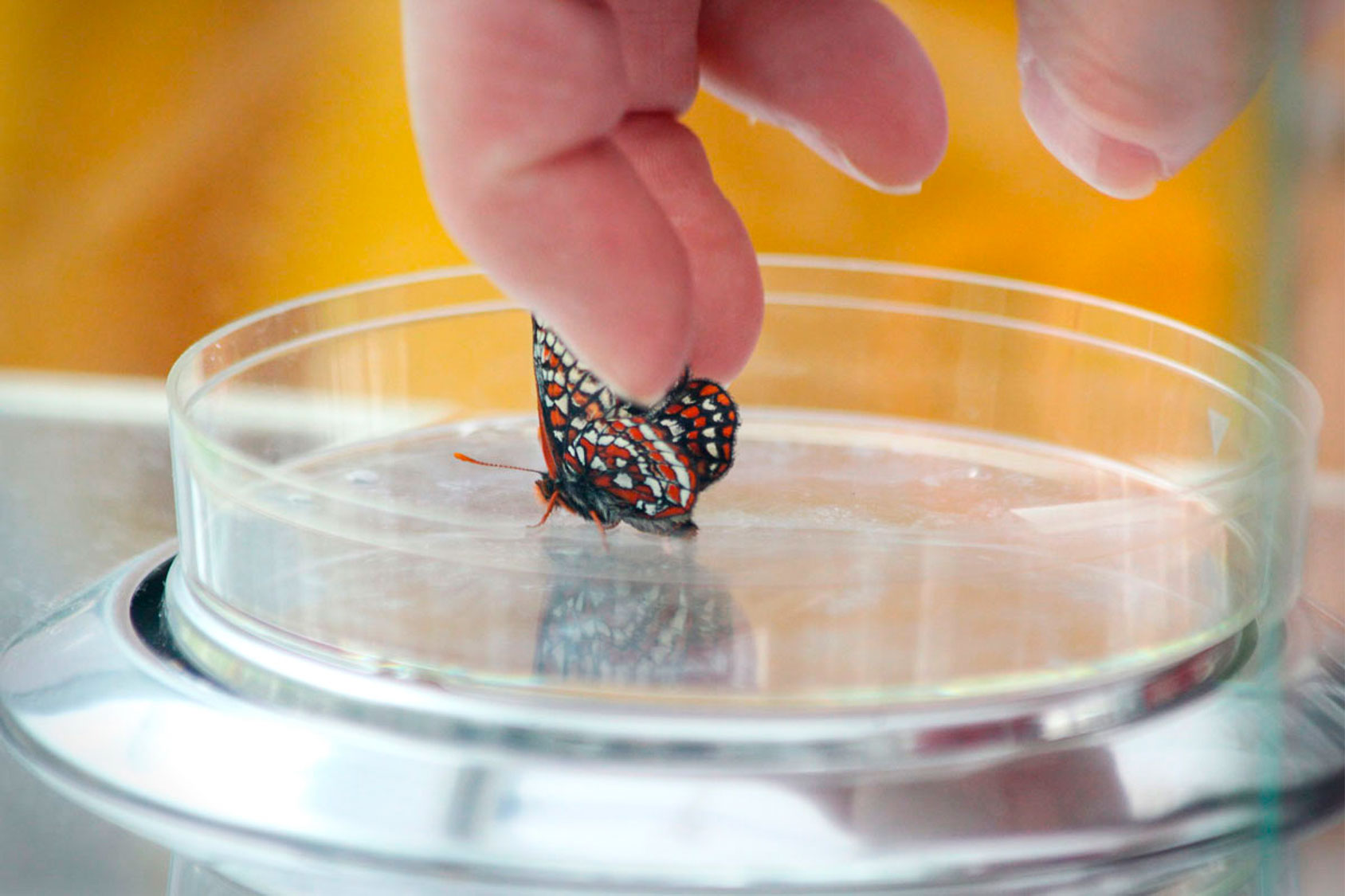
“When I told my family what I do,” Brooke explains, “they said, ‘we’re so proud of you, that you are doing something that has such a profound mission in the world.’” She finds the work meditative, and despite the “shocking” amount of data she must record, she says the work provides a feeling of satisfaction at the end of the day.
Heather agrees, and admits the job is also on her mind at night. “I literally have dreams about being able to sleep in these greenhouses.”
Over the course of about a week, most of the caterpillars are taken away for release in the wild. For the women who raised them, it’s surprisingly hard to let go.
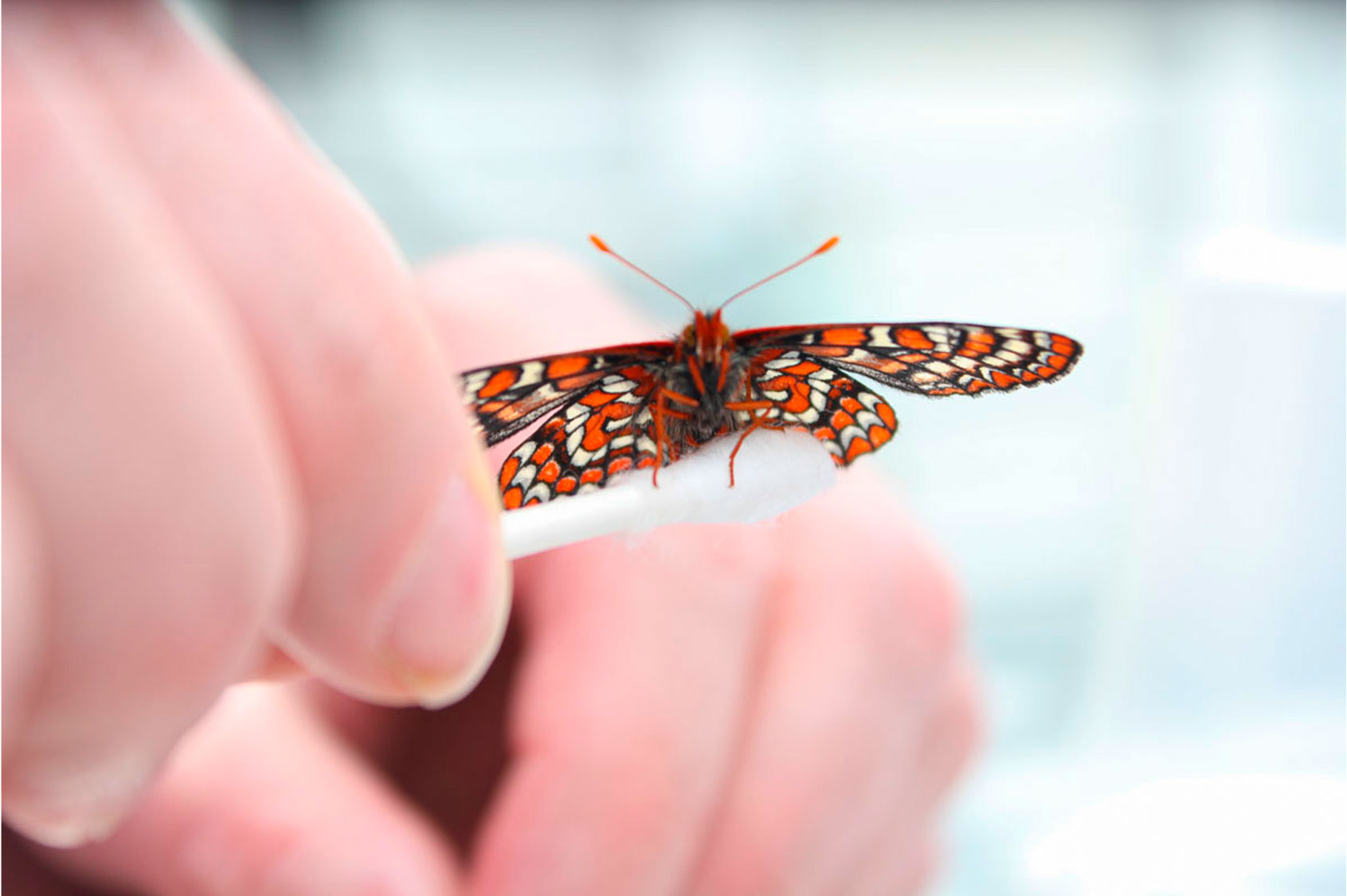
“I just didn’t think you could form a bond with an insect like that,” Heather declares. “I cried yesterday, saying goodbye.”
Before they leave, she has a message for them: the fate of the species is riding on your shoulders. “You got this,” she says.
But the price of freedom is high. Beyond the meticulous care provided by the butterfly techs at Mission Creek Corrections Center for Women, the outside world is an increasingly inhospitable place for butterfly larvae as well as for a wide variety of other insects. Even people who pay little attention to this largest and most diverse group of organisms on Earth are beginning to read the signs.
Around the world, motorists are spending less time cleaning bugs off the front of their vehicles. The “windscreen phenomenon,” as it has become known, points to the global observation that the remains of fewer insects end up on the windshields, bumpers, and grilles of motor vehicles compared with the recent past. It’s become a kind of entomological meme that is particularly apparent to older generations who remember the countless insects caked on the front of the family station wagon after long summer road trips. It’s an anecdotal observation that has led to accumulating data of what some scientists call, rather more alarmingly, the “insect apocalypse.” They say the rapid global loss of insects threatens a catastrophic collapse of nature’s ecosystems, upon which all life depends, and that human activity is driving the decline.
Pollination. Nutrient recycling. Pest control. Maintenance of healthy soil. Insects help create and sustain the natural systems terrestrial life depends on. A world with fewer insects is a world with less flora, fauna, and food. Nearly all North American songbirds need insects to feed their young. Since 1970, the number of songbirds has fallen by 29 percent, which scientists suspect is related to the decline of insects. About 80 percent of wild plants require insects for pollination, as do 75 percent of our crops. Estimates suggest that insects provide a whopping US $577-billion per year in ecological services to the global economy. But recent studies have found that insect biomass, abundance, and diversity have dropped by between 20 and 75 percent over a range of ecosystems during the last few decades. A comprehensive, global scientific review of the insect crisis, published in 2019, blames the loss on the destruction of natural habitat, pesticide use, introduced species, and climate change. The loss of bees has been well documented in the media; less well known is the plight of other pollinators, including butterflies.
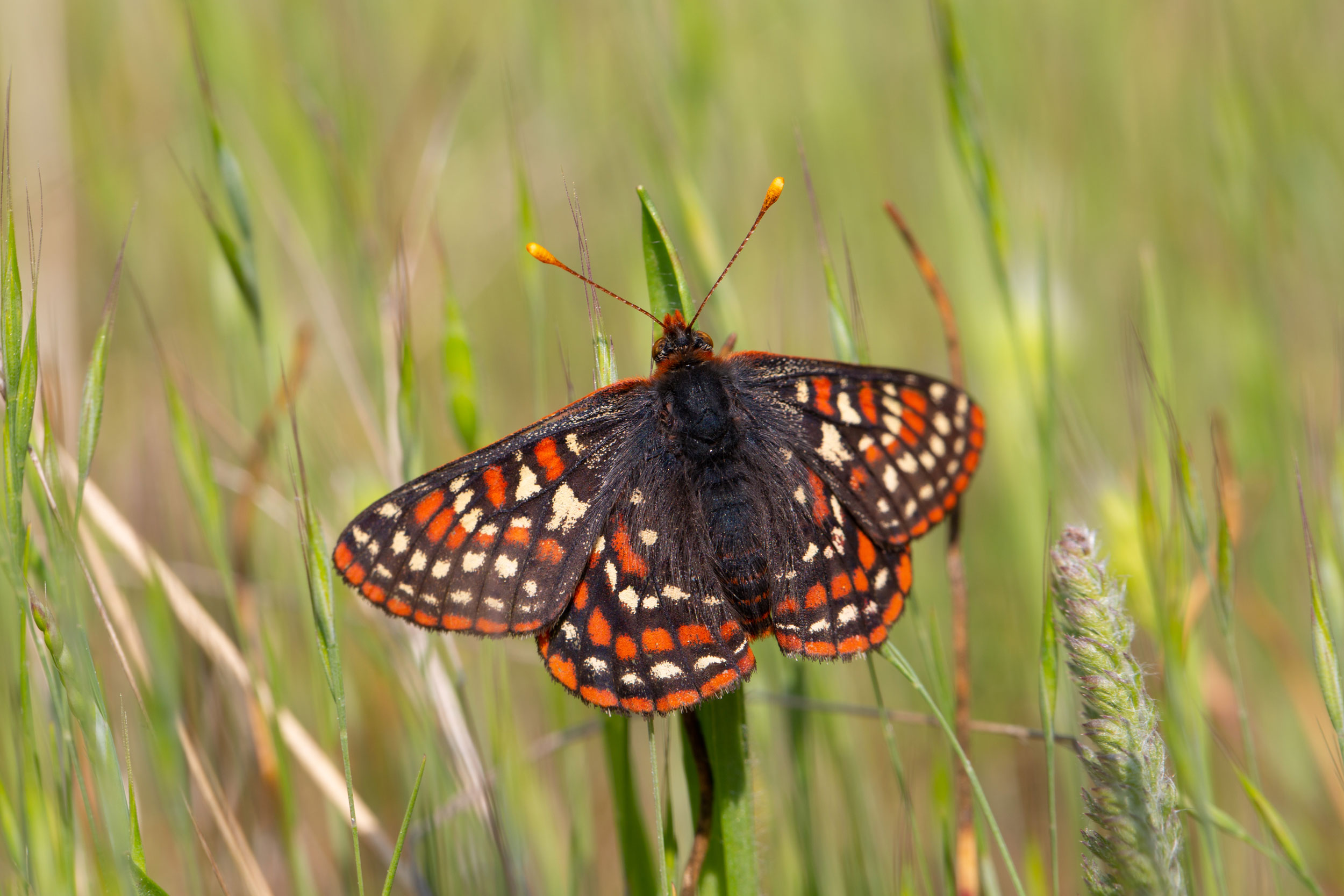
In Europe, grassland butterfly species have declined by almost half, while in the United Kingdom, 75 percent of all butterflies are in trouble. In the western United States, the number of butterflies has fallen approximately 64 percent over the past 40 years. Across the United States, 19 percent of all butterfly species are currently at risk of extinction, including both the iconic migratory monarch butterfly and the little-known Taylor’s checkerspot butterfly.
Grasshoppers, beetles, and termites are also in jeopardy—what’s so special about butterflies?
Butterflies inspire reverence, reflection, delight. Wherever they’re found, they have occupied an ethereal place in human consciousness. Around the world, people have identified butterflies as symbols of the impermanence of beauty and life itself. Their ability to metamorphose from earthbound caterpillars to magnificent creatures who rise above the Earth on gossamer wings has captivated our imaginations and serves as a symbol of both transformation and redemption.
Around 300 BCE, Chinese philosopher Zhuang Zhou wrote about a dream in which he was a butterfly, an enduring story connected with the religion and philosophy of Taoism, that puts into perspective our fragile and flittering human consciousness. Around the same time, in ancient Greece, Aristotle likened the human spirit or soul to a butterfly rising from the corpse after death. In Christian art, butterflies have been used to depict the resurrection of Jesus. On the Pacific Northwest coast, Indigenous cultures often portray the butterfly as symbolic of change and renewal as well as being the companion and guide for the trickster/transformer figure Raven.
In an age of mounting losses, people might shake their heads and hope for the best when faced with news of an insect apocalypse. But when butterflies are under threat, the stakes can feel both personal and profound.
In a sunny, open field south of Mission Creek, a half-dozen people are on their knees. Armed with tweezers, they carefully lift plantain leaves—one by one, each with a caterpillar attached—out of the plastic cups and place them onto plantain growing wild. Nearly 900 hungry Taylor’s checkerspot caterpillars are being unleashed on the landscape today. Since hatching at the prison almost 10 months ago, and leaving the care of the butterfly techs earlier this morning, these are their first moments outside.
Mary Linders rises to her feet. She wears a wool cap, turquoise earrings, and the pine-colored jacket of Washington Department of Fish and Wildlife staff. A prairie-oak species recovery biologist, she is welcoming and confident, and she’s directing today’s release.
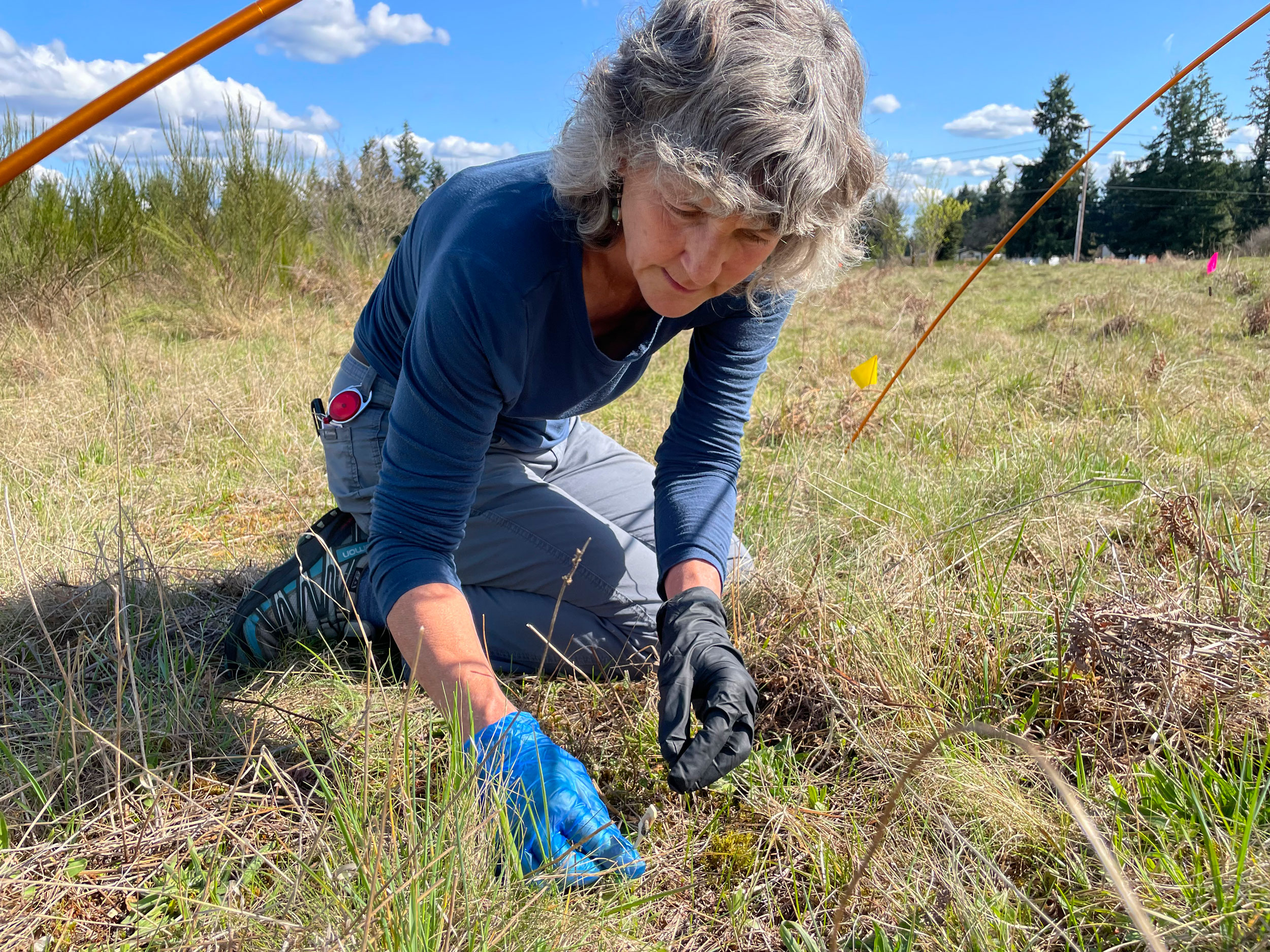
The Scatter Creek Wildlife Area covers 437 hectares—roughly 25 percent larger than New York’s Central Park. Encompassing areas of rare prairie ecosystem, as well as riparian and forest habitats, it is the traditional territory of the Coast Salish peoples. Before colonization, they maintained these open spaces by hoeing, weeding, and periodically burning for the cultivation of common camas. Crowned in spring with large periwinkle-colored flowers, this member of the lily family produces starchy bulbs that were an important traditional food. Today, it’s too early for wildflowers. These dormant fields are a dull thatch of last year’s grass and the evergreen shoots of Scotch broom. For over 20 years, Linders has worked on the recovery of native species in the south Puget Sound region, which forms the southern limit of the Salish Sea. She calls the fight against the spread of invasive Scotch broom a “forever battle” on this landscape.
Taylor’s checkerspot butterflies are adapted to thrive on the native plants still found in these fields, such as balsamroot, a member of the sunflower family with bright yellow, saucer-sized blooms that provide both nectar and a place to roost. The checkerspots lay their eggs on harsh paintbrush, a native plant that produces a profusion of vermilion flowers in June. This plant contains toxic compounds that don’t harm the caterpillars but concentrate in their bodies and make them unpalatable to predators. Their black, orange, and white coloration—both as caterpillars and butterflies—provides a visual warning to birds that, because of the toxins they harbor, they’re not good to eat. Taylor’s checkerspot butterflies have also adapted to eat and lay their eggs on plantain, a common but non-native plant that has a similar chemical signature to harsh paintbrush. Easy to grow, plantain has become the food of choice for captive breeding programs. And out in the real world, for Taylor’s checkerspot butterflies, this mix of native and non-native flora is about as good as it gets.
Long before the arrival of invasive plants, native prairies and Garry oak meadows began to disappear when settlers of European descent started farming and ranching. Newcomers also suppressed fires, which allowed the forest to overtake the landscape in many previously open areas. Of the remaining prairie-oak habitat, Linders says perhaps three percent has what it takes to support Taylor’s checkerspot butterflies. Here, she and her team help burn, mow, pull, and apply both herbicide and biocontrols to fight Scotch broom and keep the land open to support native plant and animal species. She hopes the caterpillars released today will survive to supplement the wild population. This endeavor, she says, relies on the dedication and diligence of the butterfly techs back at Mission Creek Corrections Center for Women.
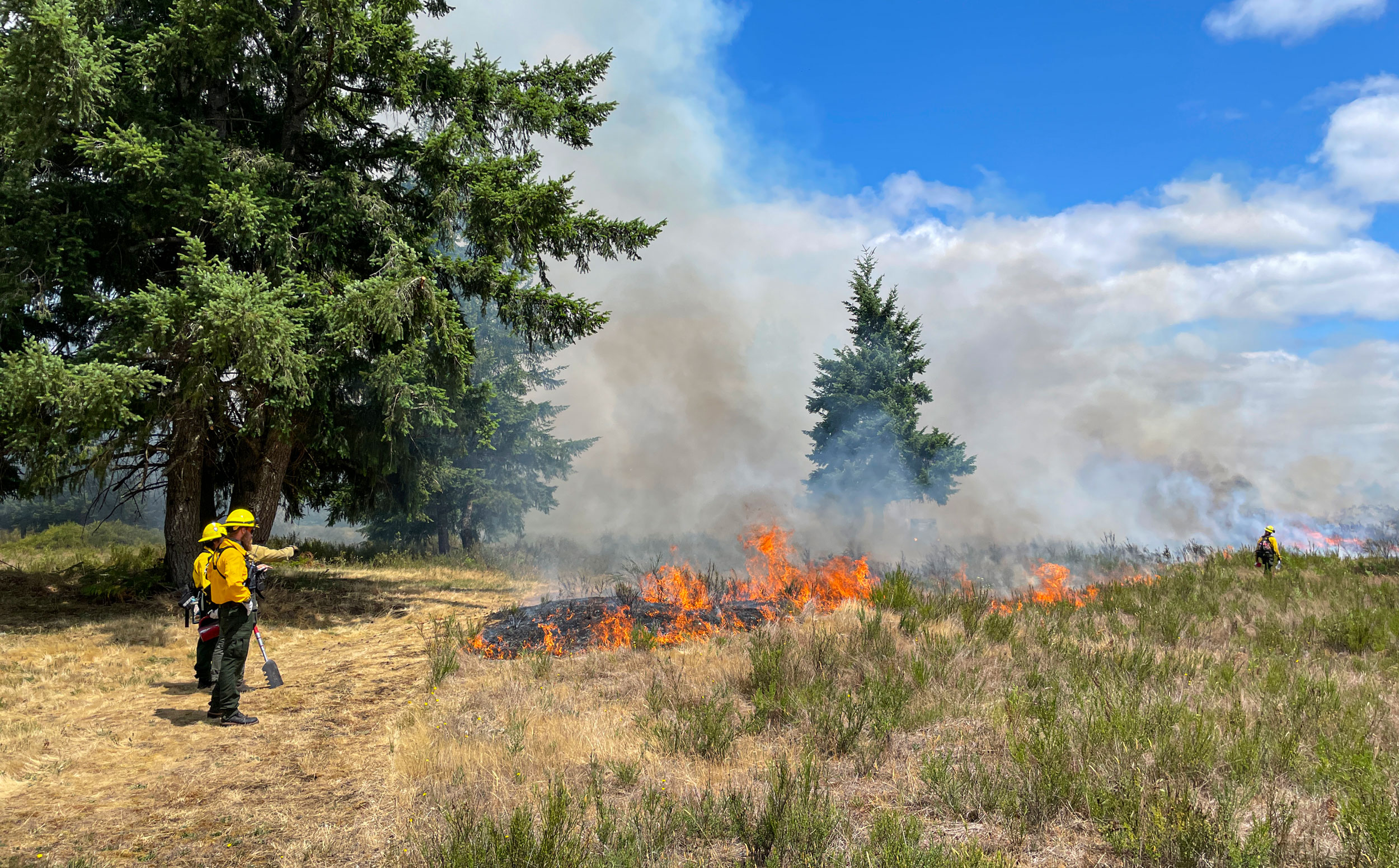
Success in the captive breeding of butterflies depends on low turnover and consistency of staff, Linders explains. At Mission Creek, the incarcerated women have few distractions and plenty of time on their hands. The animals receive focused care and attention while the women gain important work and life skills—from the formal interview process, to data gathering, teamwork, reporting, and accountability. This translates into practical experience and self-esteem. For many program participants, it leads to the start of a higher education through college credit for the work they’re doing here. It also gives them something more.
“Prison is not a very nurturing place,” Linders says, “but this program gives them something to nurture and care for, and a chance to give back in a way that they can’t otherwise. And they maybe haven’t had good access to nurturing in other parts of their lives.”
Linders points to Carolina Landa—one of the first butterfly techs at Mission Creek back in 2011—whose story of transformation continues to inspire other incarcerated women. Landa was part of the butterfly program until her release from prison in 2014. After serving her sentence, she built on the academic credit she’d achieved through the work to complete an undergraduate degree at The Evergreen State College. She then earned a master’s degree in public administration. Today, Landa works as an equity and policy analyst for the Washington State House Democrats in the state legislature. She credits her success to the butterfly program—specifically the healing, therapeutic nature of working with the animals, and the supportive connections she made with people beyond the prison.
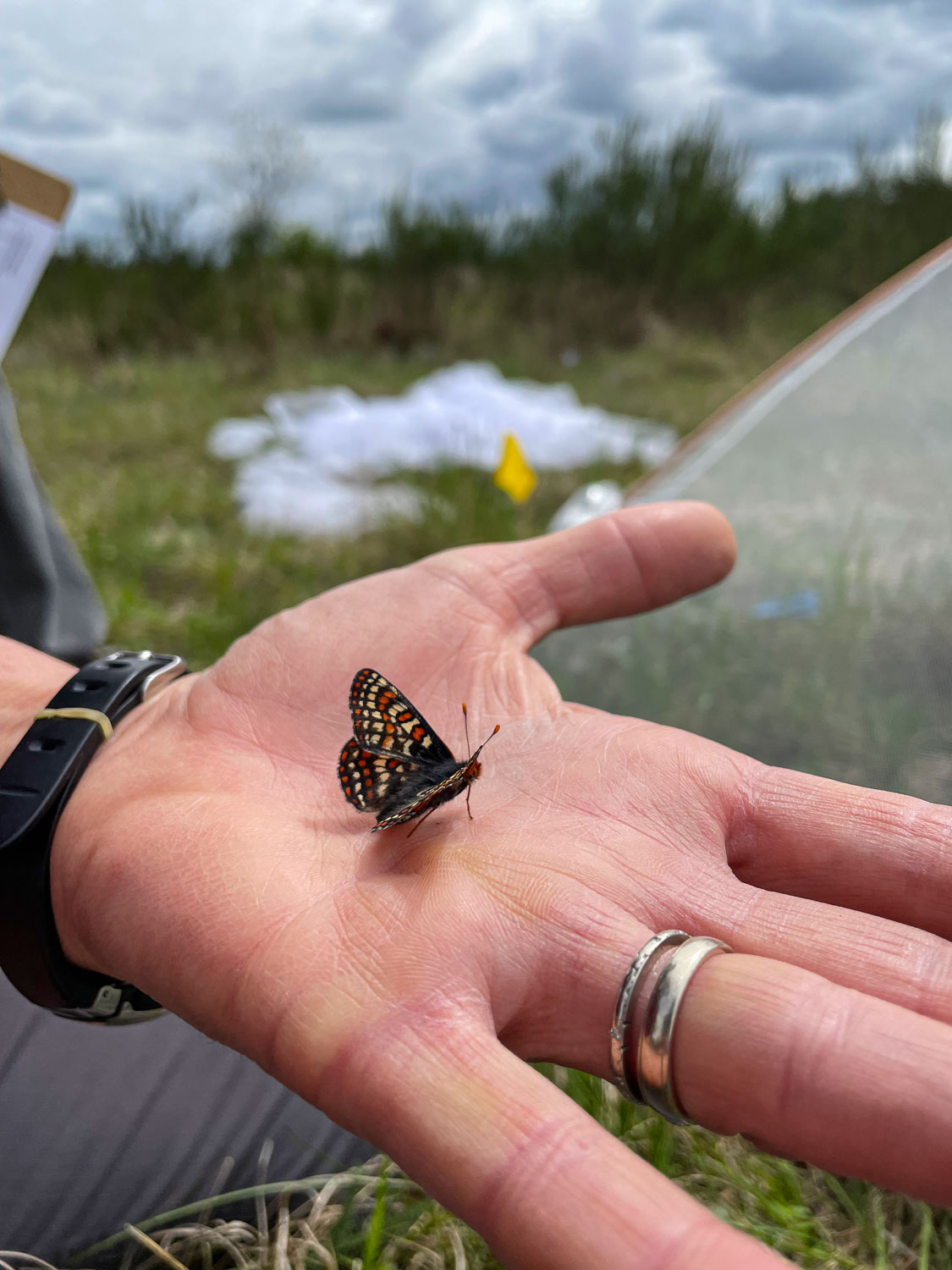
Linders casts her gaze across the landscape and paints a picture of what it will look like two months from now when the flowers are in bloom, and if everything goes to plan, Taylor’s checkerspot butterflies will be one of the most common species here. In the recent past, her team’s decades-long recovery efforts have yielded impressive results. By 2019, for example, the number of known Taylor’s checkerspot butterfly populations in the south Puget Sound region increased from one to four. But now, she says, “it feels like we’re on the verge of losing the species.” Compounding weather changes and extremes are wreaking havoc on both the Taylor’s checkerspot and its habitat throughout its life cycle. Terms like climate change and global warming are far too neutral, she says. “The reality—the sad fact—is that what is being delivered is climate chaos.”
In 2021, for example, there was an abundance of Taylor’s checkerspot butterflies at Scatter Creek, but after the extreme heat dome event that year, which added “insult to the injury” of an already chronically dry spring, only 10 percent survived. “Now you’ve just selected for animals that can tolerate hot and dry conditions. If the next year is then cold and wet, you drive them through another bottleneck.” Then, she says, you’re left trying to rebuild with an extremely small percentage of the original population.
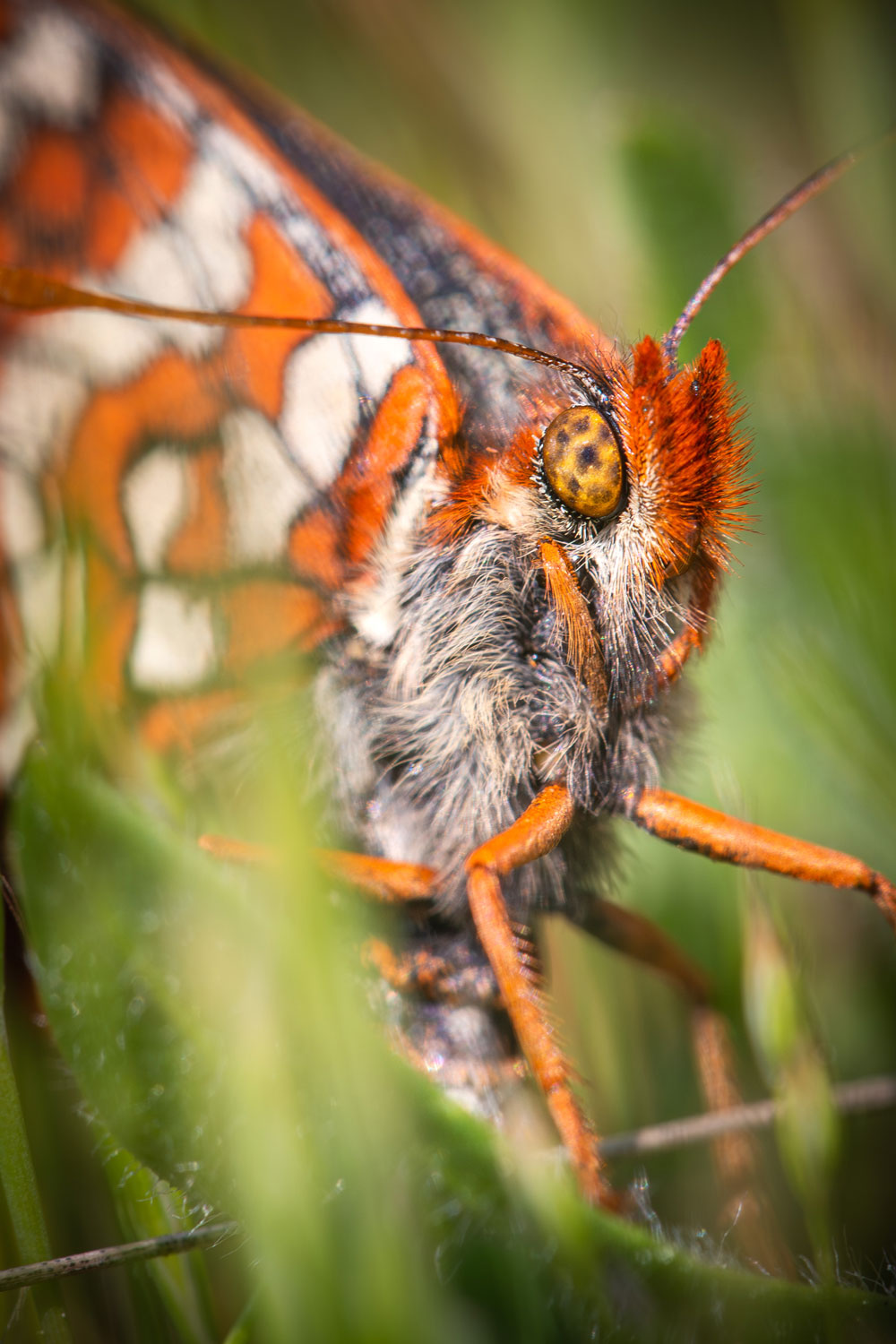
And yet, Taylor’s checkerspots continue to surprise.
“I have never seen anything that has so many tricks up its sleeves for getting through changing conditions,” Linders says. “They’re very behaviorally adaptive. It really speaks to how strong the force of life is. Life doesn’t give up easily and I think these guys are just a prime example of that.”
Nothing says resilience like resurrection. On the northern shores of the Salish Sea, Taylor’s checkerspot butterflies were once common but hadn’t been since the late 1990s and were presumed extirpated in Canada. Then, one spring day in 2005, Jenny Balke went for a walk with a friend near her home on Denman Island, British Columbia, 270 kilometers north of the prison at Mission Creek. As a biologist and conservationist, she’s spent most of her long career working and volunteering for the preservation of wildlife and wilderness. She did a double take when she spied and counted what appeared to be about 40 Taylor’s checkerspots along a trail. Disbelieving her eyes, she thought perhaps it was one of the over 30 related subspecies of Edith’s checkerspot butterflies. She pulled out her camera, captured some images, and sent them to Cris Guppy, whom she describes as western Canada’s leading butterfly specialist. Guppy confirmed the good news: Taylor’s checkerspots were suddenly back on the list of Canada’s living fauna.
Denman Island is a rural community of nearly 1,400 residents where remnants of suitable, open butterfly habitat still exist. The Denman Conservancy Association took up the cause of the rediscovered butterfly and members got down to work. Among them was Peter Karsten, retired director of the Calgary Zoo. After learning about the launch of the breeding program for Taylor’s checkerspot butterflies at the Oregon Zoo, he contacted the provincial government ministry responsible for the environment to ask why there wasn’t a similar program in British Columbia. He recalls being told there was no money, no facility, and no expertise for such an undertaking.
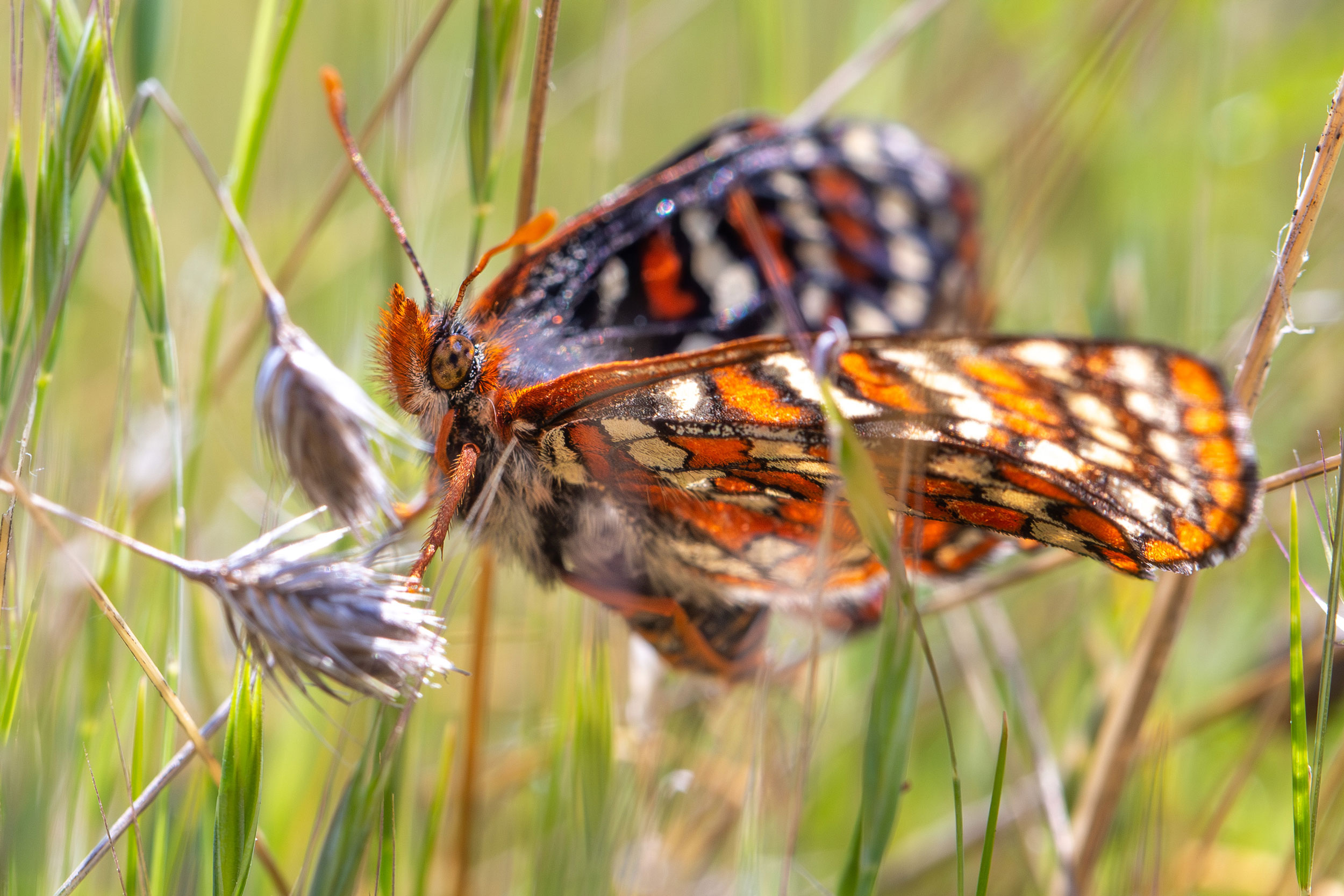
“I have a place, I’ll find the money, and I’m still connected to the conservation community,” Karsten replied. During his tenure at the Calgary Zoo, he captive-bred northern swift foxes, wood bison, whooping cranes, and Vancouver Island marmots, among others. “My whole life has been enriched with success stories of working with endangered species,” he says. “I have had the most exciting life you can imagine.”
When Taylor’s checkerspots reappeared in 2005, Karsten had already been retired for 11 years. Like the women at Mission Creek, he found himself with time on his hands, so he volunteered to lead what would become a captive breeding program.
Finally, in December 2012, with the help of fellow Denman Islanders, Karsten started converting a building on his property into a breeding lab and growing food plants for butterflies. Within four months, both the lab and crop were ready—all that was missing were butterflies. Balke, now constantly on the lookout, had observed a Taylor’s checkerspot laying eggs along a trail in May 2013. Concerned they would be trampled, she contacted Karsten, who collected those 18 eggs and produced 12 adult butterflies. Other wild-caught specimens were added to increase genetic diversity. Two years later, he and fellow islanders began releasing caterpillars into habitat restored by volunteers.
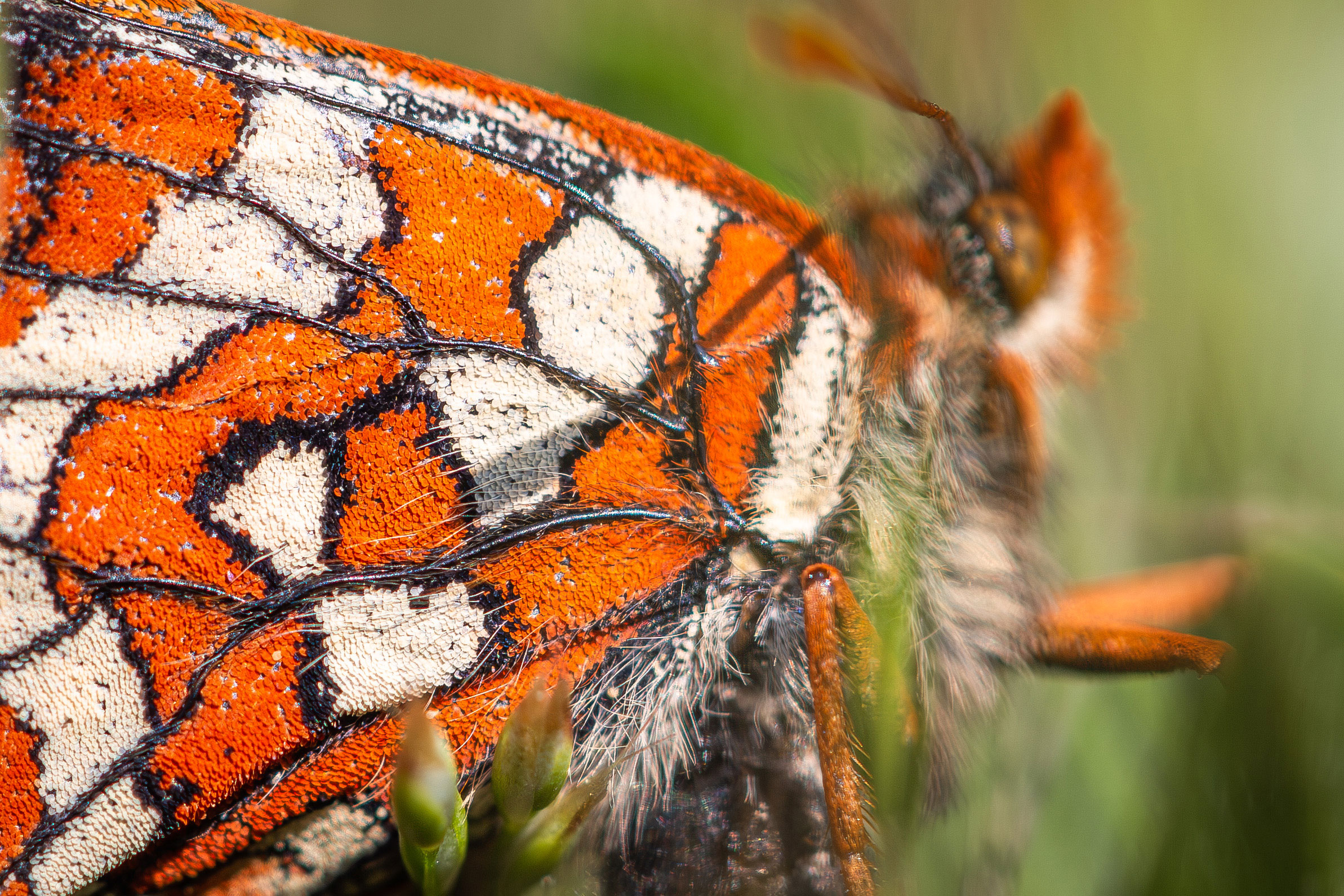
The project quickly grew. Although the breeding effort was a success, during the breeding and rearing season, it required 14-hour days from Karsten and an untold number of hours from the many volunteers. “I was amazed but not surprised,” Karsten says, at the way the community stepped up and donated their time. And like Linders in Washington State, he found himself fascinated by the animals themselves. “We always think that insects don’t have memory, they don’t have a brain, and they can’t reason—that they are just basic organisms sort of chugging along,” he says. It surprised him to find the caterpillars had learned his routine.
Every day, Karsten would open their containers, pick up each individual, and put them on the scale to weigh them and track their development. At first, their defense mechanism would kick in and they’d roll into a ball, but he would always feed them directly after. They soon dropped the defensive posture when it was time to weigh in. “Once they realized that getting handled means ‘I’m going to get fresh food,’ I could see the fear response drop,” Karsten says. “These animals definitely changed based on experience.”
Karsten, now 85, says he finally had to call it quits in 2016 to care for his wife, who’d had a stroke. It was time to put this important project in the hands of an organization with more people and resources. He passed the breeding program over to the Greater Vancouver Zoo, which is now part of British Columbia’s Taylor’s Checkerspot Butterfly Recovery Project Team, a collaboration between government and volunteer efforts.
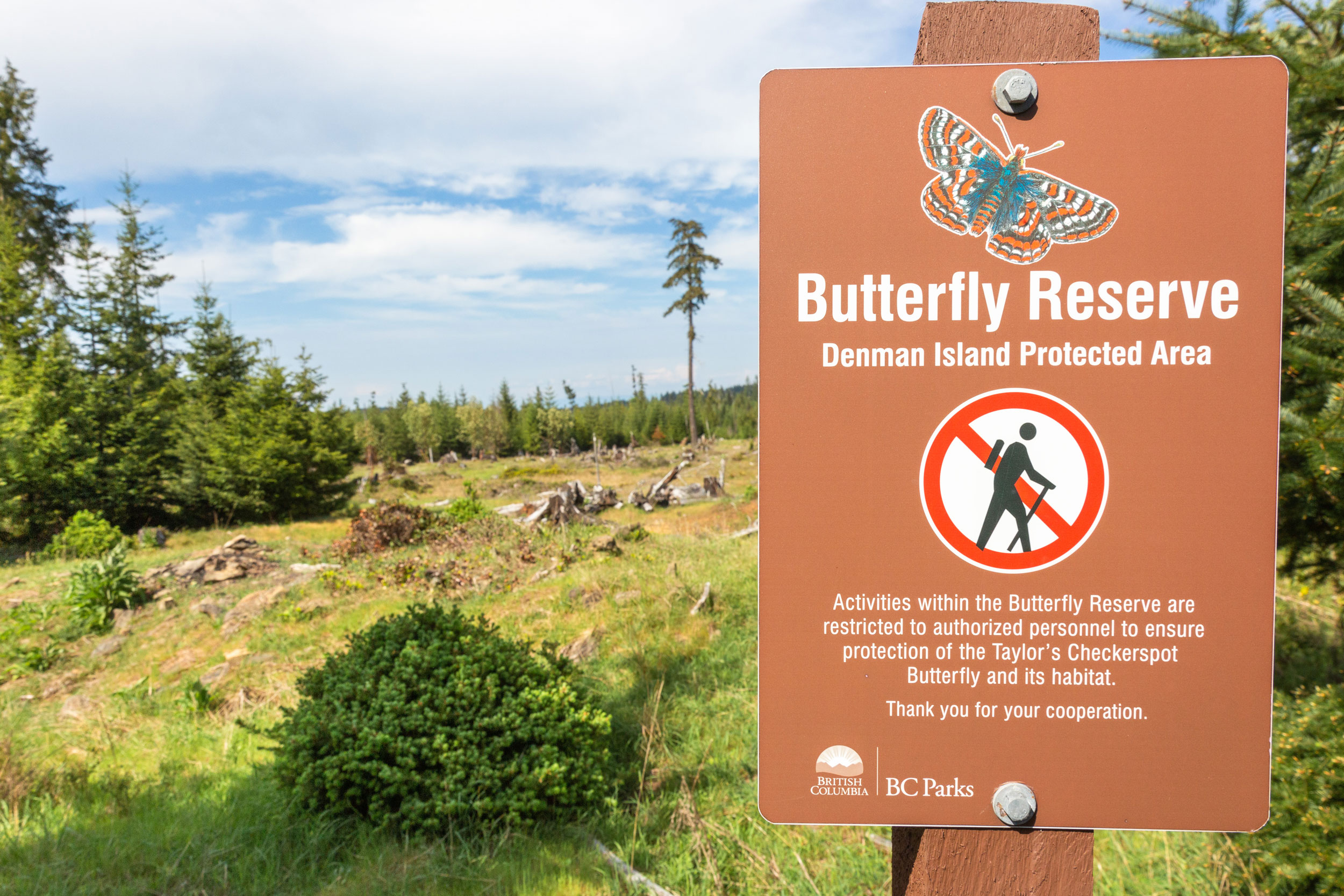
Since captive breeding began on Denman Island in 2013, approximately 10,000 Taylor’s checkerspot caterpillars have been released, and part of Denman Island Park has been set aside for their conservation. The species has been reintroduced to nearby Hornby Island, less than 10 kilometers to the east, and a new wild population has been discovered about 60 kilometers north, on Vancouver Island. Many of the same habitat pressures and climatic events that have plagued Taylor’s checkerspot butterfly populations in the south Puget Sound region have also been felt in British Columbia. And yet the butterflies, and those dedicated to saving them, persist.
At last, the moment has arrived to see Taylor’s checkerspots fly. I am ready to witness them in their legions, gathering nectar from wildflowers, searching for mates, laying eggs during those handful of days they exist as butterflies.
Neil Wilson and Bill Hamilton, a pair of otherwise-retired volunteers with Hornby Island’s Taylor’s checkerspot butterfly recovery efforts, offer to help pick an optimal time and provide on-the-spot identification. One day in May, we emerge from a forest trail into a stunning, windswept meadow on the bluffs of Hornby Island’s Helliwell Park, overlooking the Salish Sea. Here, too, open fields are being rehabilitated with native vegetation to support Taylor’s checkerspots. Last November, local schoolchildren were out planting woolly sunflower, yarrow, and field chickweed despite the cold and driving rain.
Today, the sky is blue and sunshine bright, but butterflies aren’t alighting on flowers or putting on aerial mating displays. As we walk along the open meadow, we spy movement here and there and make several positive IDs. But the butterflies are thin on the ground, biding their time in the short grass, hunkered down against the wind. At last, I hunker down with them.
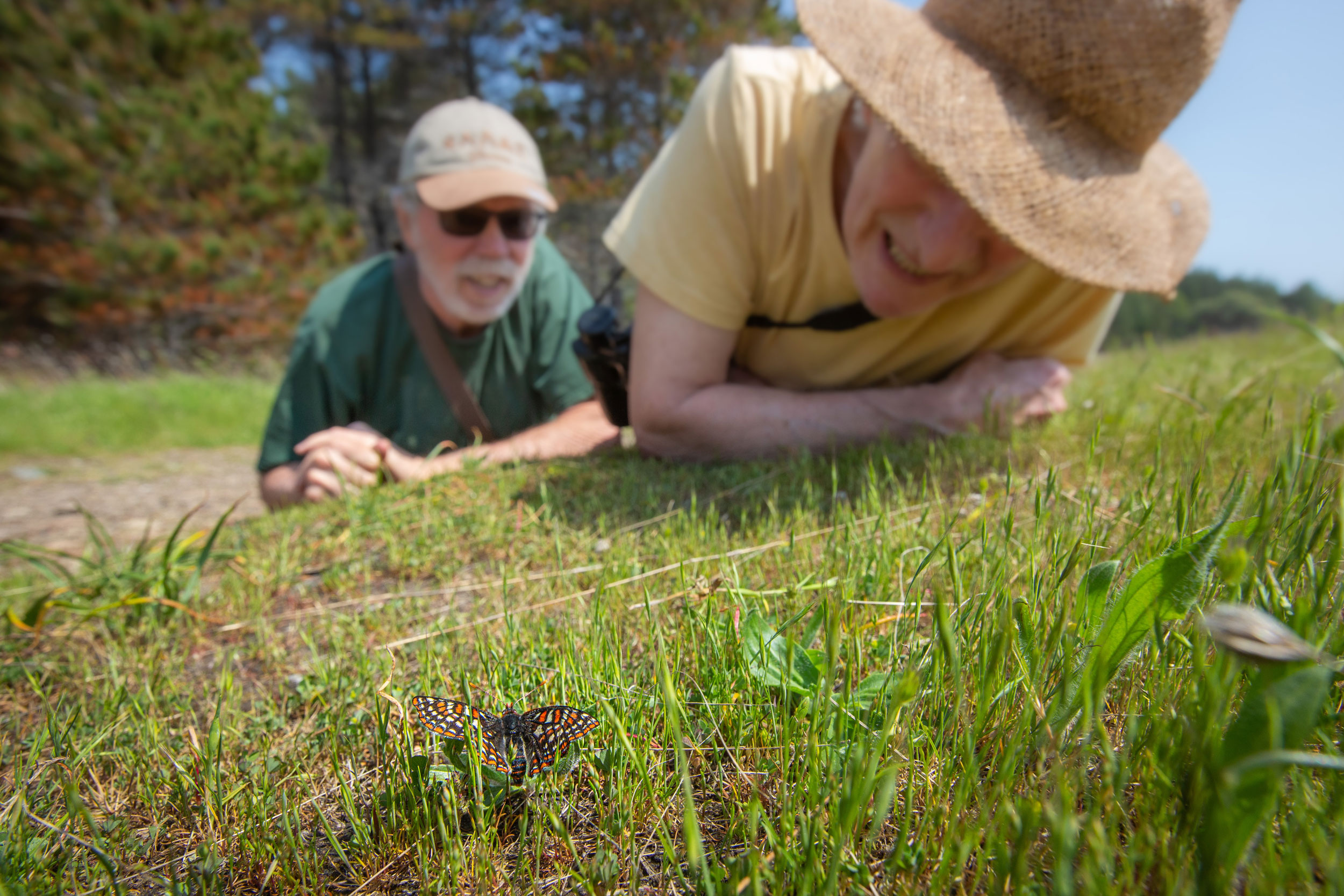
There, on my hands and knees, as I study their delicate wings, gawping eyes, and active antennae, I can almost feel the clock ticking on their ephemeral lives. I reflect on the recent bottlenecks their predecessors somehow wriggled through, and their miraculous reappearance in this region after having been given up for dead. I recognize the bright point of focus they provide for the human need to act against loss and extinction. I believe they have more to reveal about adapting to an altered world. And after lingering in an extended close-up viewing of one gorgeous survivor, I get up and head for home—feeling both anxious and more alive.
This article first appeared in Hakai Magazine and is republished here with permission.



